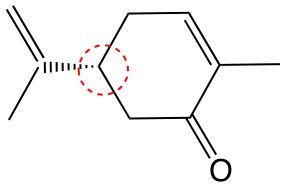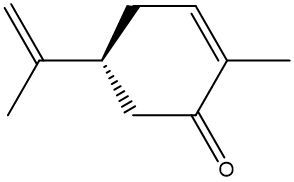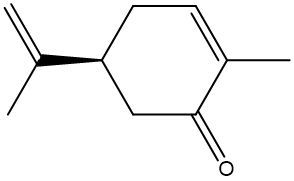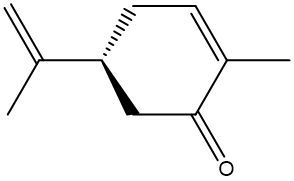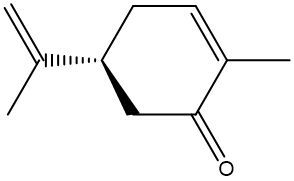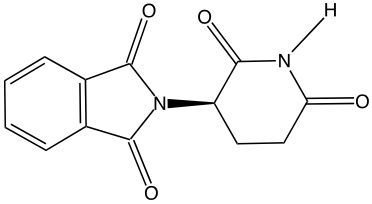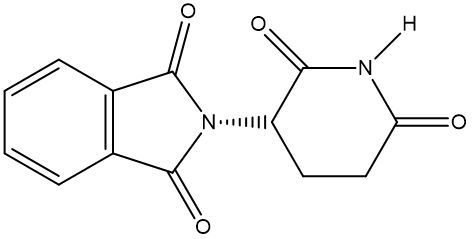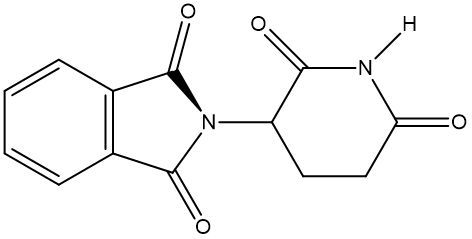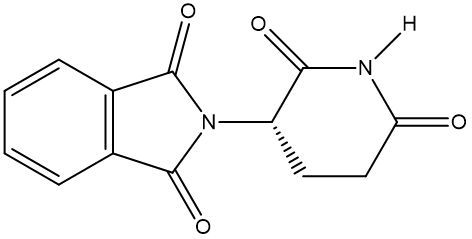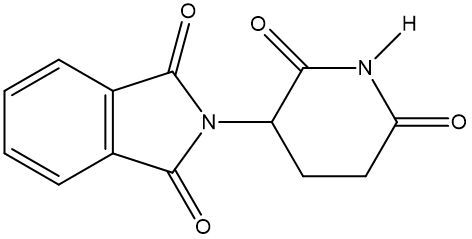So when we use the term chirality, this is just a property of molecules in which mirror images of molecules are non superimposable. If you go back and take a look at my videos on isomers, you'll see where I did this analogy with these dogs. So here, this dog is looking in the mirror. In the mirror, it sees its mirror image. Now if we were to take that dog out of the mirror, and slide it over to this dog, they wouldn't match up, they wouldn't line up. That's because if we slip this dog over out of the mirror, this spot here would not line up exactly because the spot is over here. Lining this dog up over here would mean that its spot would be on this side. This means that they are mirror images of each other. Now, Optical Isomers. Optical Isomers are also called enantiomers. These are chiral molecules, and they possess one or more chiral centers. Now what the heck is a chiral center? Well, a chiral center is where a carbon is connected to 4 unique groups. And if you don't have 4 unique groups, then you're classified as being achiral. So if we take a look here at this molecule on the left, it is achiral. And it's achiral because if we take a look, this carbon is connected to what? An OH, an NH2, but then it's connected to 2 CH3s. It is not connected to 4 different or unique groups. The molecule on the right is chiral because this H is connected to what? An OH, an NH2, an H, and a CH3. Four unique groups. So this carbon here is chiral. Now chiral molecules, we say, are optically active. So that's why we say optical, they're optical stereoisomers, that's because they're optically active. All that means is that they rotate Plane Polarized Light. In this level of chemistry, you won't have to worry too much about that at all. That's reserved more for real organic chemistry when you take Orgo 1 and Orgo 2. But for right now, just realize they're called optical isomers because they rotate plane polarized light. So this is the definitional explanation of that. Right? So just remember, when we're talking about chirality, we're talking about mirror images, we're talking about a carbon atom within a molecule connected to 4 different or unique groups.
- 1. Matter and Measurements4h 29m
- What is Chemistry?5m
- The Scientific Method9m
- Classification of Matter16m
- States of Matter8m
- Physical & Chemical Changes19m
- Chemical Properties8m
- Physical Properties5m
- Intensive vs. Extensive Properties13m
- Temperature (Simplified)9m
- Scientific Notation13m
- SI Units (Simplified)5m
- Metric Prefixes24m
- Significant Figures (Simplified)11m
- Significant Figures: Precision in Measurements7m
- Significant Figures: In Calculations19m
- Conversion Factors (Simplified)15m
- Dimensional Analysis22m
- Density12m
- Specific Gravity9m
- Density of Geometric Objects19m
- Density of Non-Geometric Objects9m
- 2. Atoms and the Periodic Table5h 23m
- The Atom (Simplified)9m
- Subatomic Particles (Simplified)12m
- Isotopes17m
- Ions (Simplified)22m
- Atomic Mass (Simplified)17m
- Atomic Mass (Conceptual)12m
- Periodic Table: Element Symbols6m
- Periodic Table: Classifications11m
- Periodic Table: Group Names8m
- Periodic Table: Representative Elements & Transition Metals7m
- Periodic Table: Elemental Forms (Simplified)6m
- Periodic Table: Phases (Simplified)8m
- Law of Definite Proportions9m
- Atomic Theory9m
- Rutherford Gold Foil Experiment9m
- Wavelength and Frequency (Simplified)5m
- Electromagnetic Spectrum (Simplified)11m
- Bohr Model (Simplified)9m
- Emission Spectrum (Simplified)3m
- Electronic Structure4m
- Electronic Structure: Shells5m
- Electronic Structure: Subshells4m
- Electronic Structure: Orbitals11m
- Electronic Structure: Electron Spin3m
- Electronic Structure: Number of Electrons4m
- The Electron Configuration (Simplified)22m
- Electron Arrangements5m
- The Electron Configuration: Condensed4m
- The Electron Configuration: Exceptions (Simplified)12m
- Ions and the Octet Rule9m
- Ions and the Octet Rule (Simplified)8m
- Valence Electrons of Elements (Simplified)5m
- Lewis Dot Symbols (Simplified)7m
- Periodic Trend: Metallic Character4m
- Periodic Trend: Atomic Radius (Simplified)7m
- 3. Ionic Compounds2h 18m
- Periodic Table: Main Group Element Charges12m
- Periodic Table: Transition Metal Charges6m
- Periodic Trend: Ionic Radius (Simplified)5m
- Periodic Trend: Ranking Ionic Radii8m
- Periodic Trend: Ionization Energy (Simplified)9m
- Periodic Trend: Electron Affinity (Simplified)8m
- Ionic Bonding6m
- Naming Monoatomic Cations6m
- Naming Monoatomic Anions5m
- Polyatomic Ions25m
- Naming Ionic Compounds11m
- Writing Formula Units of Ionic Compounds7m
- Naming Ionic Hydrates6m
- Naming Acids18m
- 4. Molecular Compounds2h 18m
- Covalent Bonds6m
- Naming Binary Molecular Compounds6m
- Molecular Models4m
- Bonding Preferences6m
- Lewis Dot Structures: Neutral Compounds (Simplified)8m
- Multiple Bonds4m
- Multiple Bonds (Simplified)6m
- Lewis Dot Structures: Multiple Bonds10m
- Lewis Dot Structures: Ions (Simplified)8m
- Lewis Dot Structures: Exceptions (Simplified)12m
- Resonance Structures (Simplified)5m
- Valence Shell Electron Pair Repulsion Theory (Simplified)4m
- Electron Geometry (Simplified)8m
- Molecular Geometry (Simplified)11m
- Bond Angles (Simplified)11m
- Dipole Moment (Simplified)15m
- Molecular Polarity (Simplified)7m
- 5. Classification & Balancing of Chemical Reactions3h 17m
- Chemical Reaction: Chemical Change5m
- Law of Conservation of Mass5m
- Balancing Chemical Equations (Simplified)13m
- Solubility Rules16m
- Molecular Equations18m
- Types of Chemical Reactions12m
- Complete Ionic Equations18m
- Calculate Oxidation Numbers15m
- Redox Reactions17m
- Spontaneous Redox Reactions8m
- Balancing Redox Reactions: Acidic Solutions17m
- Balancing Redox Reactions: Basic Solutions17m
- Balancing Redox Reactions (Simplified)13m
- Galvanic Cell (Simplified)16m
- 6. Chemical Reactions & Quantities2h 35m
- 7. Energy, Rate and Equilibrium3h 46m
- Nature of Energy6m
- First Law of Thermodynamics7m
- Endothermic & Exothermic Reactions7m
- Bond Energy14m
- Thermochemical Equations12m
- Heat Capacity19m
- Thermal Equilibrium (Simplified)8m
- Hess's Law23m
- Rate of Reaction11m
- Energy Diagrams12m
- Chemical Equilibrium7m
- The Equilibrium Constant14m
- Le Chatelier's Principle23m
- Solubility Product Constant (Ksp)17m
- Spontaneous Reaction10m
- Entropy (Simplified)9m
- Gibbs Free Energy (Simplified)18m
- 8. Gases, Liquids and Solids3h 25m
- Pressure Units6m
- Kinetic Molecular Theory14m
- The Ideal Gas Law18m
- The Ideal Gas Law Derivations13m
- The Ideal Gas Law Applications6m
- Chemistry Gas Laws16m
- Chemistry Gas Laws: Combined Gas Law12m
- Standard Temperature and Pressure14m
- Dalton's Law: Partial Pressure (Simplified)13m
- Gas Stoichiometry18m
- Intermolecular Forces (Simplified)19m
- Intermolecular Forces and Physical Properties11m
- Atomic, Ionic and Molecular Solids10m
- Heating and Cooling Curves30m
- 9. Solutions4h 10m
- Solutions6m
- Solubility and Intermolecular Forces18m
- Solutions: Mass Percent6m
- Percent Concentrations10m
- Molarity18m
- Osmolarity15m
- Parts per Million (ppm)13m
- Solubility: Temperature Effect8m
- Intro to Henry's Law4m
- Henry's Law Calculations12m
- Dilutions12m
- Solution Stoichiometry14m
- Electrolytes (Simplified)13m
- Equivalents11m
- Molality15m
- The Colligative Properties15m
- Boiling Point Elevation16m
- Freezing Point Depression9m
- Osmosis16m
- Osmotic Pressure9m
- 10. Acids and Bases3h 29m
- Acid-Base Introduction11m
- Arrhenius Acid and Base6m
- Bronsted Lowry Acid and Base18m
- Acid and Base Strength17m
- Ka and Kb12m
- The pH Scale19m
- Auto-Ionization9m
- pH of Strong Acids and Bases9m
- Acid-Base Equivalents14m
- Acid-Base Reactions7m
- Gas Evolution Equations (Simplified)6m
- Ionic Salts (Simplified)23m
- Buffers25m
- Henderson-Hasselbalch Equation16m
- Strong Acid Strong Base Titrations (Simplified)10m
- 11. Nuclear Chemistry56m
- BONUS: Lab Techniques and Procedures1h 38m
- BONUS: Mathematical Operations and Functions47m
- 12. Introduction to Organic Chemistry1h 34m
- 13. Alkenes, Alkynes, and Aromatic Compounds2h 12m
- 14. Compounds with Oxygen or Sulfur1h 6m
- 15. Aldehydes and Ketones1h 1m
- 16. Carboxylic Acids and Their Derivatives1h 11m
- 17. Amines38m
- 18. Amino Acids and Proteins1h 51m
- 19. Enzymes1h 37m
- 20. Carbohydrates1h 46m
- Intro to Carbohydrates4m
- Classification of Carbohydrates4m
- Fischer Projections4m
- Enantiomers vs Diastereomers8m
- D vs L Enantiomers8m
- Cyclic Hemiacetals8m
- Intro to Haworth Projections4m
- Cyclic Structures of Monosaccharides11m
- Mutarotation4m
- Reduction of Monosaccharides10m
- Oxidation of Monosaccharides7m
- Glycosidic Linkage14m
- Disaccharides7m
- Polysaccharides7m
- 21. The Generation of Biochemical Energy2h 8m
- 22. Carbohydrate Metabolism2h 22m
- 23. Lipids2h 26m
- Intro to Lipids6m
- Fatty Acids25m
- Physical Properties of Fatty Acids6m
- Waxes4m
- Triacylglycerols12m
- Triacylglycerol Reactions: Hydrogenation8m
- Triacylglycerol Reactions: Hydrolysis13m
- Triacylglycerol Reactions: Oxidation7m
- Glycerophospholipids15m
- Sphingomyelins13m
- Steroids15m
- Cell Membranes7m
- Membrane Transport10m
- 24. Lipid Metabolism1h 45m
- 25. Protein and Amino Acid Metabolism1h 37m
- 26. Nucleic Acids and Protein Synthesis2h 54m
- Intro to Nucleic Acids4m
- Nitrogenous Bases16m
- Nucleoside and Nucleotide Formation9m
- Naming Nucleosides and Nucleotides13m
- Phosphodiester Bond Formation7m
- Primary Structure of Nucleic Acids11m
- Base Pairing10m
- DNA Double Helix6m
- Intro to DNA Replication20m
- Steps of DNA Replication11m
- Types of RNA10m
- Overview of Protein Synthesis4m
- Transcription: mRNA Synthesis9m
- Processing of pre-mRNA5m
- The Genetic Code6m
- Introduction to Translation7m
- Translation: Protein Synthesis18m
Chirality - Online Tutor, Practice Problems & Exam Prep
 Created using AI
Created using AIChirality refers to molecules whose mirror images are non-superimposable, exemplified by optical isomers or enantiomers, which have one or more chiral centers—carbon atoms bonded to four unique groups. To draw enantiomers, one can use two methods: creating a mirror image or inverting the spatial orientation of bonds. Chiral molecules are optically active, meaning they rotate plane polarized light, a concept more relevant in advanced organic chemistry. Understanding chirality is crucial for grasping stereochemistry and its implications in chemical reactions and biological systems.
Chirality Concept 1
Video transcript
Chirality Example 1
Video transcript
Here in this example question, it says, identify the following molecule as chiral or achiral. Now here's a huge hint. When it comes to chiral centers, remember, the carbon must be connected to 4 unique groups. But if you're a double bonded or triple-bonded carbon, it's not possible. If we take a look at this double-bonded carbon for instance, carbon must make 4 bonds. It's making 1, 2, 3 bonds that we see. That 4th bond is that invisible hydrogen. Now how many groups would that carbon be connected to? 1, 2, 3. Can't get to 4. So if you have a double bond or a triple bond for a carbon, it can't be chiral. So that means we're ignoring all these carbons within this benzene ring, and we're focusing on this carbon here, and this carbon here. The carbon on the far right, it's making one bond, so it has 3 hydrogens we don't see. Definitely not chiral. But this carbon here, it's making 1, 2, 3 bonds that we see, so it has 1 hydrogen that's this entire Benzene, and then this CH3 group. How many unique groups is that? That's 4 unique groups, which means that this carbon here, is a chiral carbon. Which means the molecule overall would be chiral. So here, we're going to say the following molecule is a chiral molecule.
Identify chiral centers in the provided optical isomers.
Identify molecule(s) capable of rotating plane polarized light.
A and D
B and C
A and C
C and D
A, C, and D
Drawing Enantiomers Concept 2
Video transcript
In this video, we're going to talk about the methods we can use in drawing an enantiomer. Now when drawing enantiomers of a chiral molecule, there are 2 methods available.
Now, with method 1, we're going to draw an image the molecule sees in the mirror. So let's just imagine this blue dotted line here is our mirror, and this molecule was looking into it. It would see back its own reflection. Now, what would this look like? Well, we'd still have this carbon here in the center, it would see this NH2 still at the top, And what else would it see? Well, it's looking in the mirror, so it'd see these 2 over here, looking back at it, so we'd have the H with still the dash wedge bond, And we'd have our CH3 group. So we'd have it like this. Remember we want to show the connection between the carbon carbons. So it's best to draw it this way. And then we'd have the OH back here. This new image that I've just drawn is the mirror image of my original molecule, or its enantiomer.
Remember, an enantiomer is the mirror image. Now this one, method 1, is a little bit tricky, because you have to look into the mirror, and you have to draw it kind of like backwards. And your dashed wedge to a solid wedge on the chiral center. You'll keep the molecule in place the way it is. So here carbon would still be here, this NH2 would still be here, this OH would still be over here. And all we're doing here is we're inverting the bonds. So now, this dashed bond becomes a wedged bond, and it has the H now. And then this wedged bond becomes a dashed bond, And it has a CH3 connected to it. In this method, we keep the molecule stationary in the same spot, and we're just changing the bonds that show spatial orientation.
Alright. So we could call this the inversion method for method 2. Right. So these are the 2 different ways we can draw the enantiomer of our original chiral molecule.
Drawing Enantiomers Example 2
Video transcript
So here it says, drawing answers for each given chiral molecule using method 1. Alright. So here we're going to imagine this is our mirror, and our molecule looks into it. When it does, it sees back its own reflection. So here we have our carbon, it would see this OH back in the mirror, we'd still have this methyl group here, and then we have these 2 in the back. Make sure you're showing the connections correctly, carbon to carbon. And then here connected to the H. So this would be the enantiomer or mirror image of our original molecule.
For the second one, we imagine there's a mirror here. We'd have these 2 carbons still connected to each other. And we're looking at our reflection in the mirror. So we'd have that H there, we'd have this H here, and this H here. And in the back, we have this H still here. This Br here in the back. And then finally, our NH2 here. So this would represent our 2nd mirror image or second enantiomer for this chiral molecule in option 2. Right. So this is how you would show both of our mirror images or enantiomers of our original chiral molecules.
Provide the enantiomer using method 2. (Hint: chiral center is circled in red.)
Predict enantiomer for thalidomide compound given below.
Do you want more practice?
Here’s what students ask on this topic:
What is chirality in chemistry?
Chirality in chemistry refers to a property of molecules where their mirror images are non-superimposable. This means that the molecule and its mirror image cannot be aligned perfectly, much like how your left and right hands are mirror images but cannot be superimposed on each other. Chiral molecules typically have one or more chiral centers, which are carbon atoms bonded to four unique groups. These molecules are optically active, meaning they can rotate plane-polarized light. Understanding chirality is essential for studying stereochemistry and its implications in chemical reactions and biological systems.
 Created using AI
Created using AIWhat is a chiral center?
A chiral center, also known as a stereocenter, is a carbon atom within a molecule that is bonded to four different groups. This unique arrangement allows for the existence of non-superimposable mirror images, or enantiomers. For example, if a carbon atom is bonded to an OH group, an NH2 group, a hydrogen atom, and a CH3 group, it is considered a chiral center. The presence of chiral centers in a molecule makes it optically active, meaning it can rotate plane-polarized light.
 Created using AI
Created using AIHow do you draw the enantiomer of a chiral molecule?
To draw the enantiomer of a chiral molecule, you can use two methods. Method 1 involves drawing the mirror image of the molecule. Imagine a mirror placed next to the molecule and draw what the molecule would look like in the mirror. Method 2, known as the inversion method, involves keeping the molecule stationary and inverting the spatial orientation of the bonds at the chiral center. For example, if a bond is represented as a dashed wedge, it becomes a solid wedge in the enantiomer, and vice versa.
 Created using AI
Created using AIWhat are optical isomers?
Optical isomers, also known as enantiomers, are a type of stereoisomer where the molecules are non-superimposable mirror images of each other. These isomers have one or more chiral centers and are optically active, meaning they can rotate plane-polarized light. The direction in which they rotate light can be either clockwise (dextrorotatory) or counterclockwise (levorotatory). Optical isomers are crucial in many biological processes and chemical reactions, as their different spatial arrangements can lead to different properties and activities.
 Created using AI
Created using AIWhy are chiral molecules optically active?
Chiral molecules are optically active because they can rotate plane-polarized light. This optical activity arises from the asymmetry of the chiral center, where a carbon atom is bonded to four different groups. When plane-polarized light passes through a solution of chiral molecules, the light's plane of polarization is rotated. The direction and degree of this rotation depend on the specific arrangement of the groups around the chiral center. This property is significant in advanced organic chemistry and is used to study the behavior and interactions of chiral molecules.
 Created using AI
Created using AIYour GOB Chemistry tutor
- 2-Aminopropane is an achiral molecule, but 2-aminobutane is chiral. Explain.
- Define the following terms:b. Achiral
- Which of the following molecules are chiral? (Hint: Draw each molecule and analyze it as illustrated in Worked...
- Define the following terms:c. Chiral carbon
- Identify the chiral center(s) in each of the following molecules:a. 2-Methyl-3-pentanol
- Which of the alcohols pictured in Problem 14.48 are chiral? Indicate the chiral carbons for those that are chi...
- Are the following molecules chiral or achiral? If they are chiral, identify the chiral carbon atom(s).d. <I...
- Identify all chiral centers in the isomers that you drew for part (a).
- Mark the chiral centers in the following molecules, if any, with an asterisk (*):(a) <IMAGE>
- Mark the chiral centers in the following molecules, if any, with an asterisk (*):(d) <IMAGE> ...
- ALLIED Health Mark the chiral centers in the following molecules, if any, with an asterisk (*):(b) <IMAGE&g...
- ALLIED Health Mark the chiral centers in the following molecules, if any, with an asterisk (*).(a) <IMAGE...
- ALLIED Health Mark the chiral centers in the following molecules, if any, with an asterisk (*).(d) <IMAGE...
- ALLIED Health Mark the chiral centers in the following molecules, if any, with an asterisk (*).(d) <IMAGE...
- ALLIED Health Mark the chiral centers in the following molecules, if any, with an asterisk (*):(d) <IMAGE&g...






